Navratri, a vibrant and joyous festival, celebrates the triumph of good over evil and the divine feminine energy. During these nine days and nights, devotees across India come together to worship the various forms of Goddess Durga. Besides its religious and cultural significance, Navratri is a time for dressing up in colorful traditional attire and adorning oneself with beautiful jewellery. Each day of Navratri is associated with a different color, and wearing the right jewellery can elevate your festive look.
Here’s a guide to nine jewellery ideas for the nine days of Navratri:
Day 1 – Pratipada (Grey) – Silver Jewellery
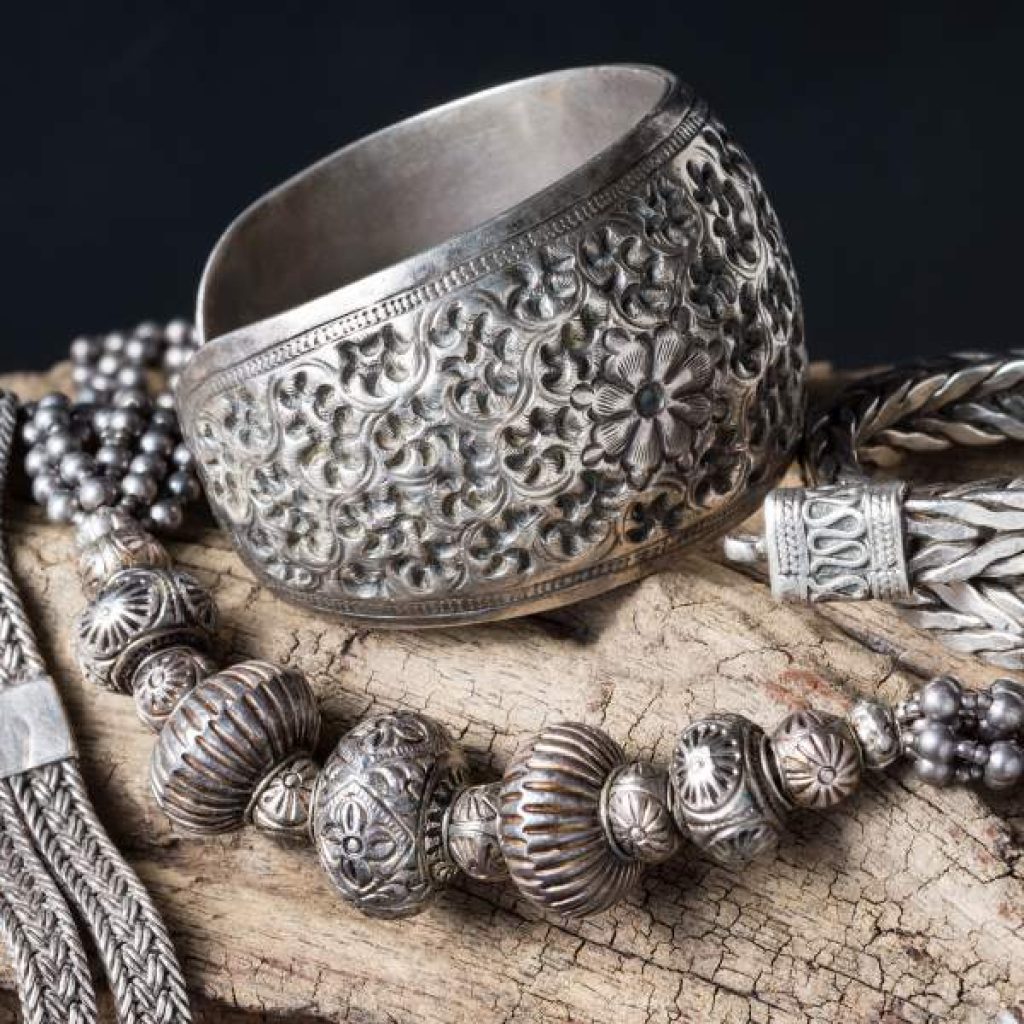
The first day of Navratri, Pratipada, is associated with the color grey. To complement this serene hue, consider adorning yourself with silver jewellery. Silver jhumkas, bangles, and a statement silver necklace can bring an elegant touch to your grey attire. Silver jewellery also holds cultural significance and is believed to bring blessings and protection.
Why Silver Jewellery on Pratipada?
Cultural Relevance: Silver has a special place in Indian culture and traditions, often associated with purity and spirituality.
Blessings and Protection: Wearing silver jewellery is believed to invite blessings and protection from negative energies.
Serene and Elegant: The understated elegance of silver complements the tranquil vibe of grey, creating a harmonious look.
Day 2 – Dwitiya (Orange) – Kundan Jewellery
On Dwitiya, the color theme is orange, symbolizing energy and enthusiasm. To enhance your orange outfit, opt for Kundan jewellery. Kundan sets with orange or red stones can add a regal touch to your look. Kundan necklaces, earrings, and maang tikka are popular choices for this day.
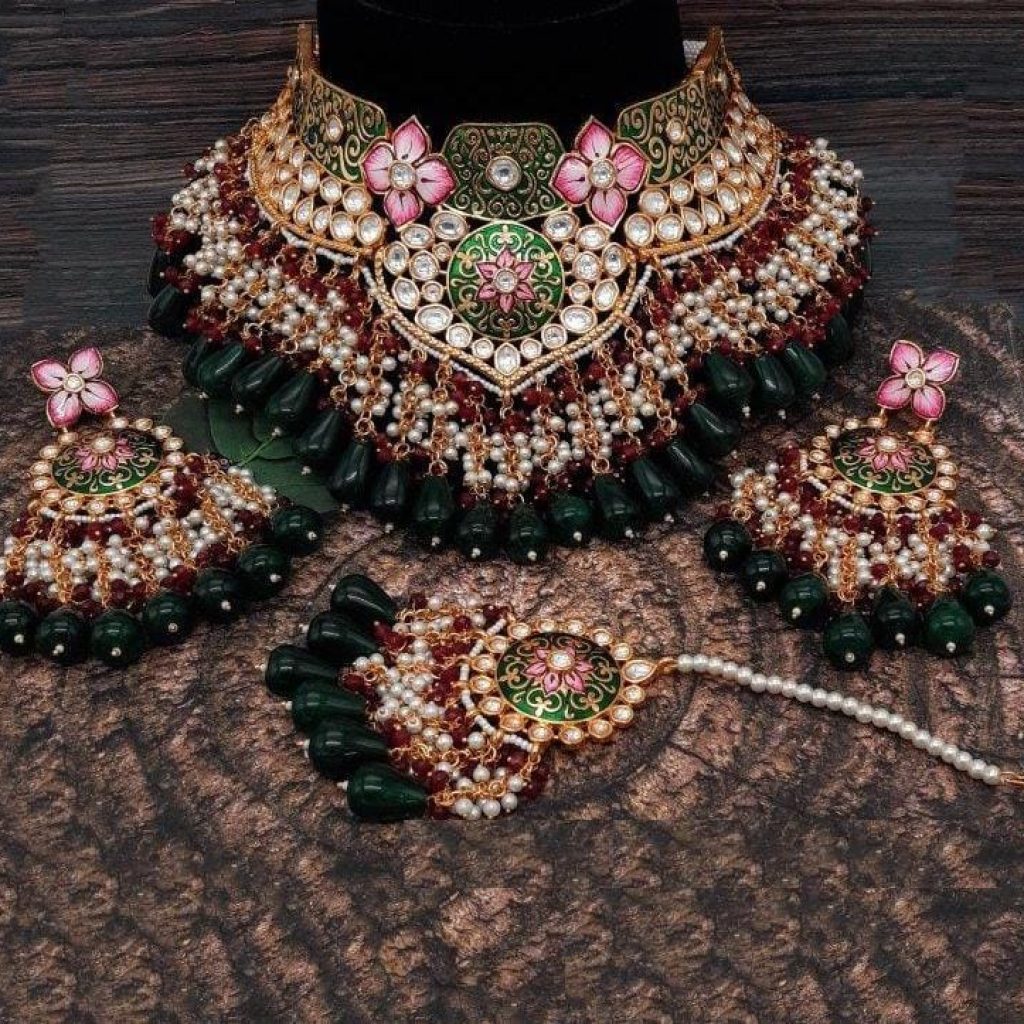
Why Kundan Jewellery on Dwitiya?
Regal Appeal: Kundan jewellery is known for its regal and opulent appearance, making it perfect for festive occasions.
Color Harmony: The shimmering Kundan stones in shades of red and orange harmonize beautifully with the orange attire.
Versatile: Kundan jewellery can be paired with both traditional and contemporary outfits, offering versatility.
Day 3 – Tritiya (White) – Pearl Jewellery
Tritiya, associated with the color white, represents purity and spirituality. Pearl jewellery perfectly complements this theme. A classic pearl necklace with matching earrings can exude timeless elegance. Pearls symbolize wisdom and balance, making them an ideal choice for this auspicious day.

Why Pearl Jewellery on Tritiya?
Symbolism: Pearls symbolize purity, wisdom, and emotional balance, aligning with the spiritual significance of Tritiya.
Timeless Elegance: Pearls have an everlasting appeal that complements the simplicity of white.
Cultural Connection: Many Indian cultures consider pearls to be auspicious and ideal for celebrations.
Day 4 – Chaturthi (Red) – Temple Jewellery
Chaturthi, the day associated with red, signifies strength and determination. Temple jewellery, with its intricate designs inspired by South Indian temples, is a fantastic choice. These pieces often feature motifs of deities and intricate patterns. A red silk saree paired with temple jewellery creates a striking look.
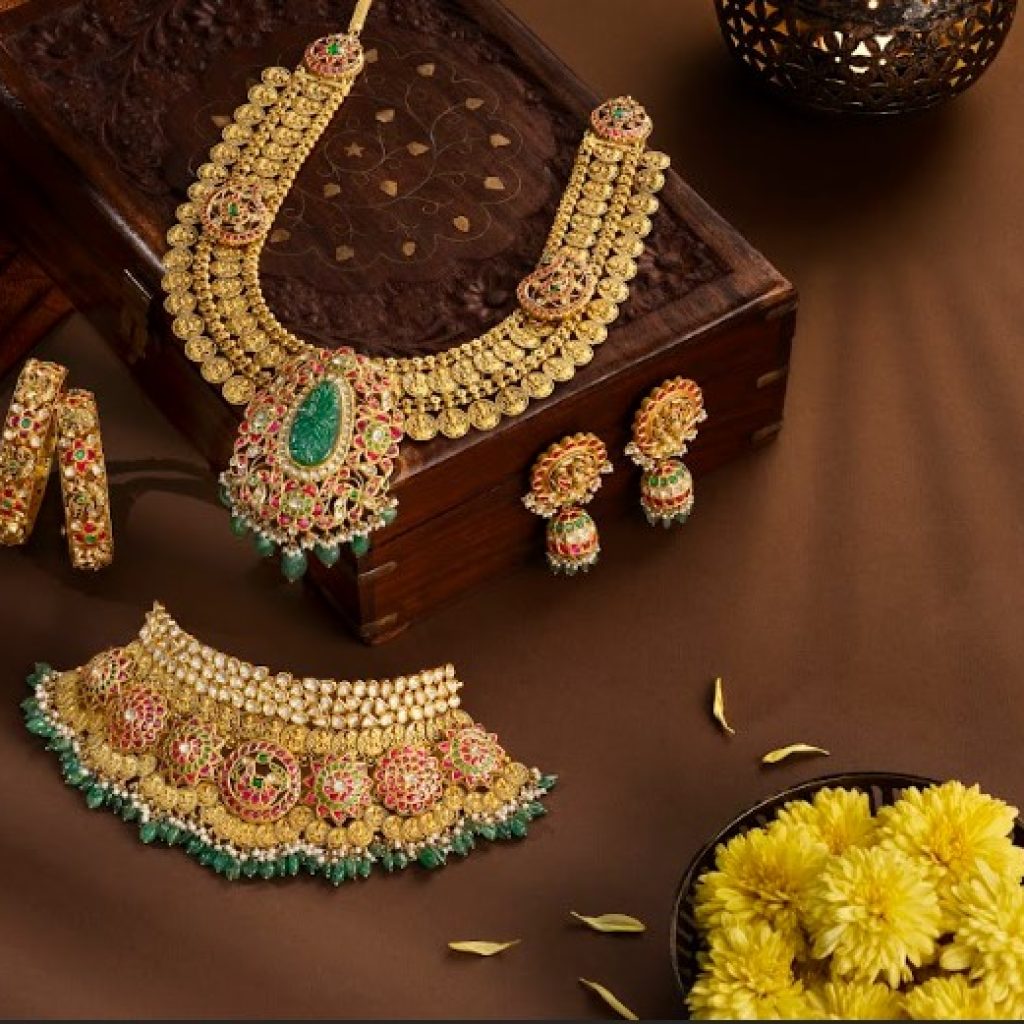
Why Temple Jewellery on Chaturthi?
Divine Connection: Temple jewellery is deeply rooted in spiritual symbolism, making it a perfect choice for Chaturthi.
Intricate Detailing: The elaborate designs and motifs in temple jewellery add a touch of grandeur to your ensemble.
Cultural Significance: Temple jewellery reflects the rich cultural heritage of South India and adds authenticity to your look.
Day 5 – Panchami (Royal Blue) – Meenakari Jewellery
Panchami, representing royal blue, symbolizes divinity and calmness. To enhance your royal blue attire, consider wearing Meenakari jewellery. Meenakari pieces are known for their vibrant enamel work and intricate designs.
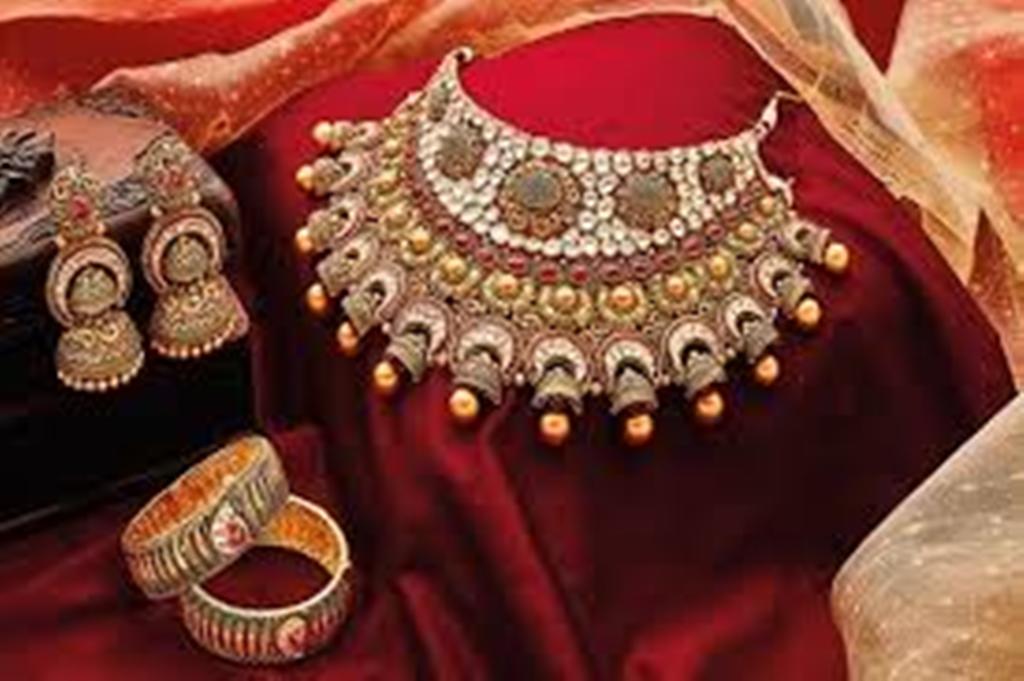
Why Meenakari Jewellery on Panchami?
Vibrant Colors: Meenakari jewellery is known for its colorful enamel work, making it an excellent match for the royal blue theme.
Unique Designs: The intricate Meenakari designs are eye-catching and can be conversation starters at festive gatherings.
Cultural Aesthetics: Meenakari work is a significant part of Indian culture and traditions, making it culturally relevant for Navratri.
Day 6 – Sashti (Yellow) – Gold Jewellery
Yellow is the color of Sashti, symbolizing happiness and positivity. Gold jewellery, a symbol of prosperity, is a perfect choice. A gold necklace, bangles, and earrings can elevate your yellow outfit. Gold also holds immense cultural significance during festivals.
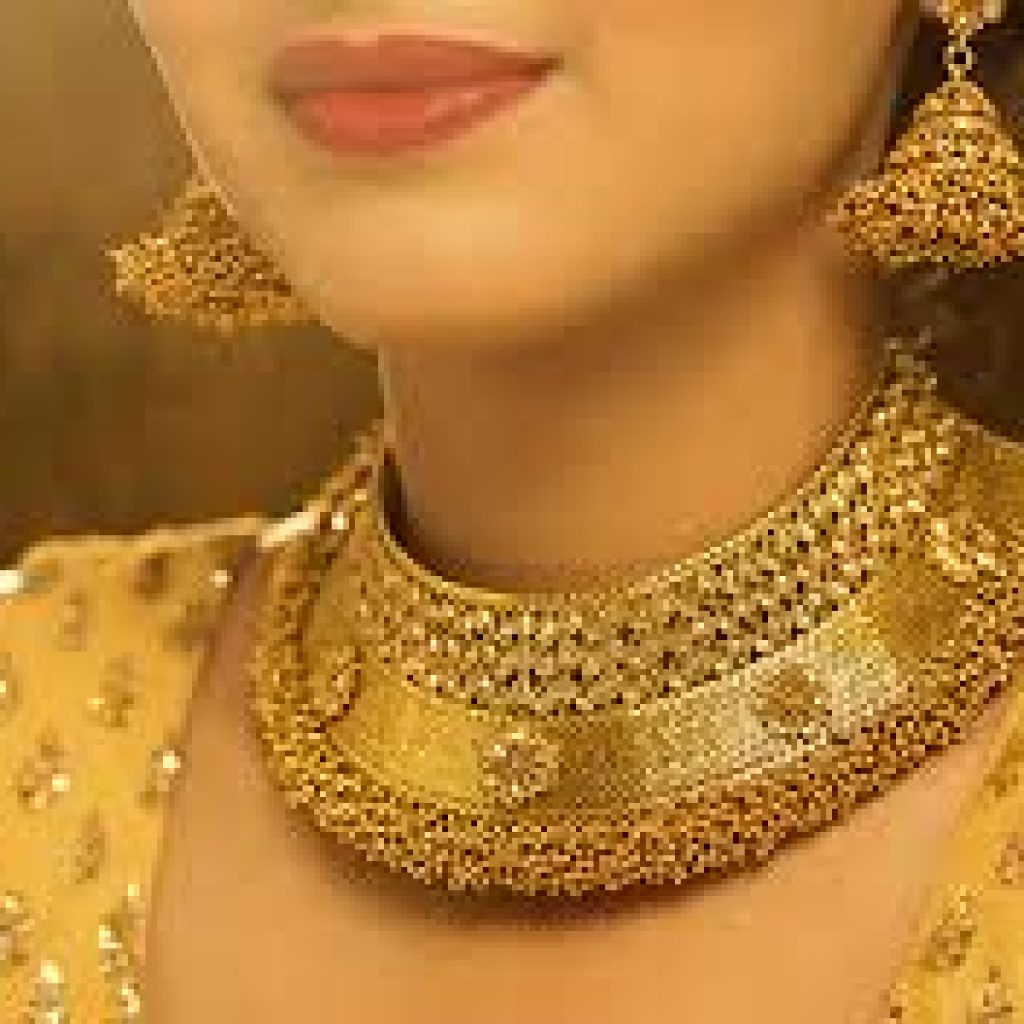
Why Gold Jewellery on Sashti?
Cultural Significance: Gold is considered highly auspicious and is often associated with wealth and prosperity.
Radiance: The warm and radiant glow of gold complements the vibrancy of yellow attire.
Traditional Elegance: Gold jewellery embodies traditional Indian elegance and can be passed down through generations.
Day 7 – Saptami (Green) – Emerald Jewellery
Saptami celebrates the color green, representing growth and harmony. To enhance your green attire, consider wearing emerald jewellery. Emeralds are associated with love and rebirth. A necklace or a pair of emerald earrings can complete your green ensemble with elegance.
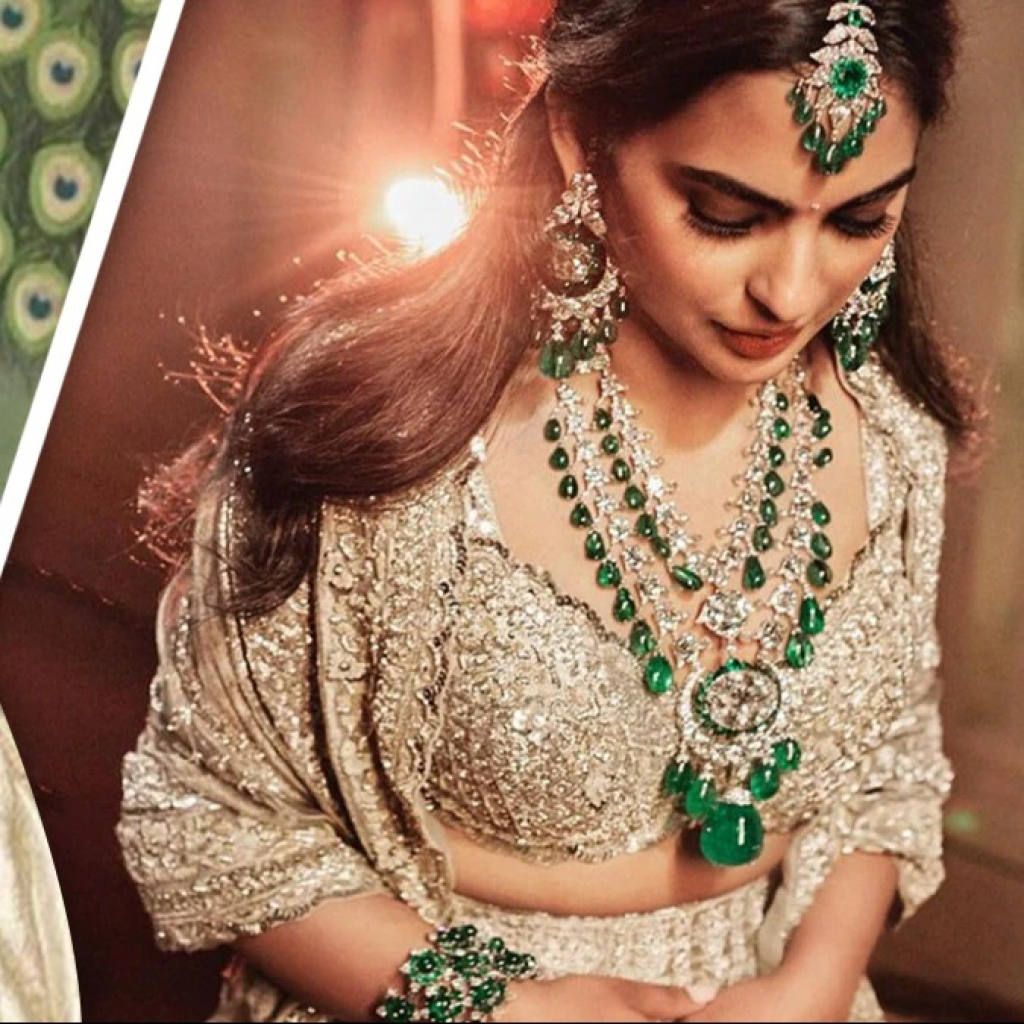
Why Emerald Jewellery on Saptami?
Harmonious Match: The green of emeralds harmonizes beautifully with the green theme of Saptami.
Symbolic Significance: Emeralds are associated with love, harmony, and growth, making them perfect for this day.
Elegance: The deep green hue of emeralds adds a touch of sophistication to your look.
Day 8 – Ashtami (Peacock Green) – Oxidized Silver Jewellery
Ashtami is dedicated to the mesmerizing shade of peacock green, symbolizing beauty and grace. Oxidized silver jewellery, with its dark and antique finish, complements this color beautifully. Oxidized silver jhumkas, nose rings, and bangles can add a touch of boho-chic to your outfit.
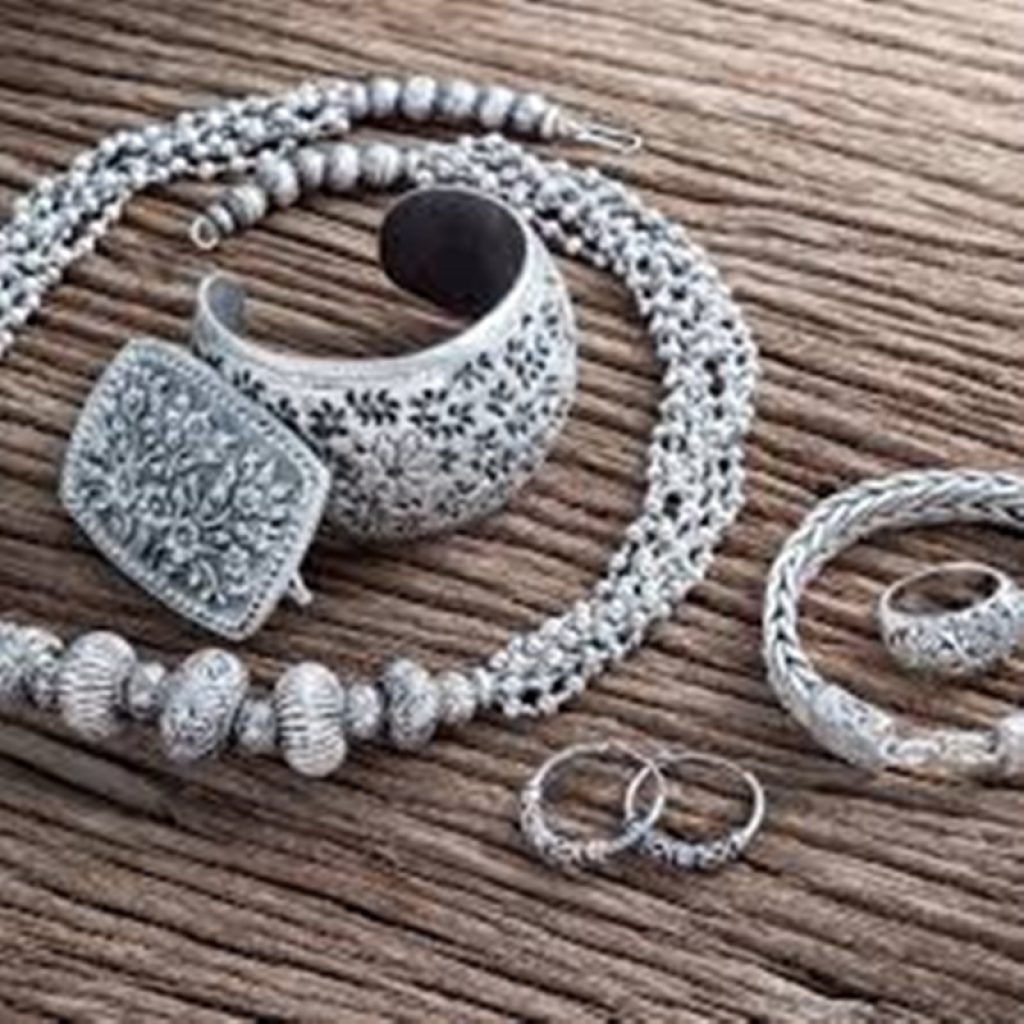
Why Oxidized Silver Jewellery on Ashtami?
Boho-Chic Vibes: Oxidized silver jewellery has a distinct bohemian charm that pairs well with the peacock green theme.
Unique Aesthetic: The dark finish of oxidized silver creates a unique and rustic look.
Comfort: Oxidized silver pieces are often lightweight and comfortable to wear, making them ideal for dancing during Garba and Dandiya.
Day 9 – Navami (Purple) – Amethyst Jewellery
The final day of Navratri, Navami, is associated with the color purple, symbolizing luxury and nobility. Amethyst jewellery perfectly aligns with this regal hue. Amethyst is known for its spiritual and calming properties. A mangalsutra necklace or a pair of amethyst earrings can complete your purple ensemble with elegance.

Why Amethyst Jewellery on Navami?
Regal Elegance: Amethyst’s deep purple color exudes a sense of regal elegance.
Calming Energy: Amethyst is associated with tranquility and spiritual growth, adding depth to your Navami ensemble.
Unique Beauty: The distinctive hue of amethyst makes it a standout choice for this auspicious day.
👉 Click here to read the latest Gujarat news on TheLiveAhmedabad.com





